We all know that enabling Extreme Memory Profiles (XMP) can boost your system’s RAM speed. However, we have noticed that sometimes, XMP fails to work. Enabling XMP has no effect on RAM’s speed, which defeats its purpose. In this post, we will see what you can do if XMP is not working on your Windows computer.
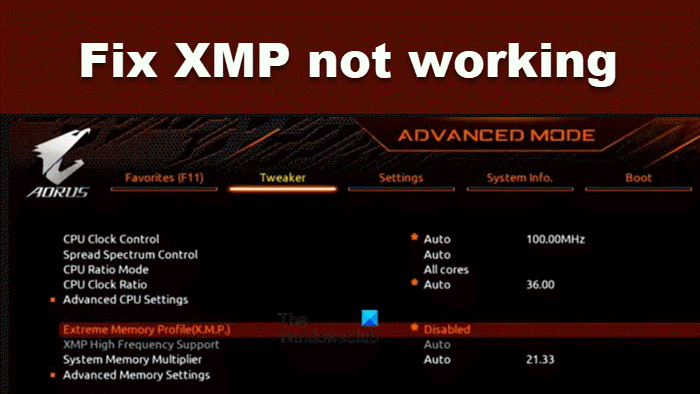
Why is my RAM not running on XMP?
If you’re facing issues while using XMP, it is recommended that you check if your system is compatible with it. Your motherboard manufacturers generally mention XMP support in their product specifications or manuals. If your motherboard does not support XMP, you won’t be able to enable XMP for your RAM modules. It is important to remember that XMP compatibility depends not only on the motherboard but also the CPU. So, do check that as well.
Fix XMP not working on Windows 11/10
If XMP is not working for you, follow the solutions mentioned below.
- Few things to check before starting troubleshooting
- Reboot the computer
- Make sure your RAM is compatible
- Update your BIOS
- Reconnect your CMOS Battery
- Troubleshoot in Clean Boot
- Reset your BIOS
Let us talk about them in detail.
1] Few things to check before starting troubleshooting
When setting up two DIMMs, don’t enable CPU overclocking, as it may not be supported depending on the board. Choose the XMP profile that matches your memory specs, check voltage settings, and use the correct memory slots. For optimal performance, set DRAM voltage to 1.35v and VCCIO/VCCSA to 1.1v. Save settings, exit BIOS, and test performance.
Read: What is XMP in BIOS and how do I enable or use it?
2] Reboot the computer
Sometimes, a system requires a reboot after changing its XMP profile. We recommend rebooting your computer after changing XMP profile settings and then checking if the issue is resolved.
Read: Enable or disable XMP profile on MSI, Gigabyte, and ASUS motherboards
3] Make sure your RAM is compatible
You need to ensure that your RAM sticks intended for use with XMP are compatible with your motherboard by consulting the motherboard manufacturer’s Qualified Vendor List (QVL).
4] Update your BIOS
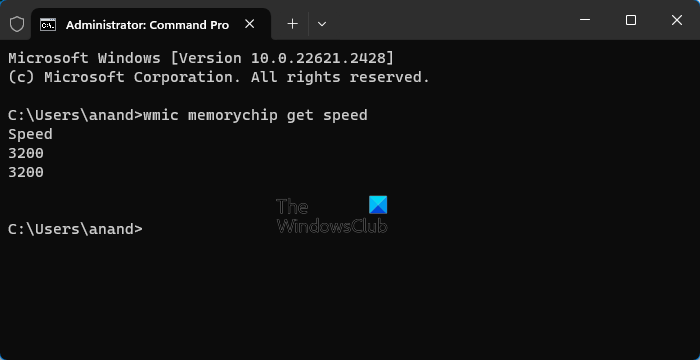
In case your BIOS firmware is outdated, it is likely, that the changes you made to your XMP Profile are not getting registered, In that case, we need to update your BIOS and then check the RAM speed using the command mentioned below.
wmic memorychip get speed
If the RAM speed is not up to the mark, we recommend you disable the XMP Profile, reboot your computer, and then turn it back on, as the change was not registered earlier due to the absence of the latest BIOS utility.
5] Reconnect your CMOS Battery
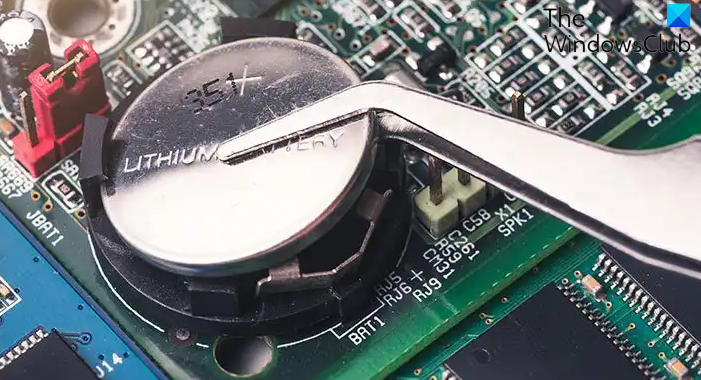
The CMOS retains BIOS configurations, including memory controller settings that can prevent XMP from initializing if they are inaccurate. Removing and reconnecting the CMOS resets resolves the issue.
- First of all, turn off your computer and detach all the cables.
- Now, you need to get access to your CMOS battery, it will look similar to the screenshot given above.
- Remove the battery and press and hold onto your power button for 30 seconds.
- Then, after a minute, attach the battery we asked you to remove and pack your CPU.
This way, you can reset your CMOS, which should reset some fragments of your BIOS configuration. Once done, boot into BIOS and enable XMP. Hopefully, this will do the trick for you. However, if the issue persists, you need to get a new CMOS battery, replace it with your current one, and check if the issue is resolved.
Read: Intel Extreme Tuning Utility: Overclock CPU, Memory & Bus speeds
6] Troubleshoot in Clean Boot
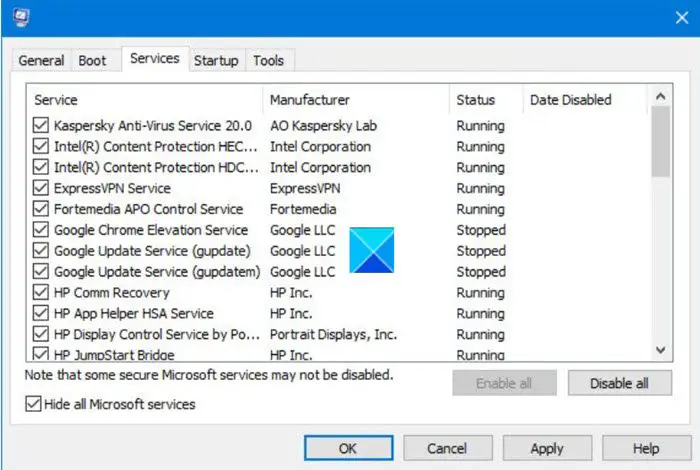
It is highly likely that certain applications, such as overclocking utilities, can interfere with XMP functionality at the operating system level. Hence, it is imperative to uninstall any problematic software to resolve the issue without any further delay. In this case, you are required to do a Clean Boot as it will disable all the third-party services and processes, then, check if the issue persists. If XMP starts working after booting without third-party services, enable the processes manually to discover the cause.
Read: Benchmark CPU free with OverClock Checking Tool – OCCT
7] Reset your BIOS
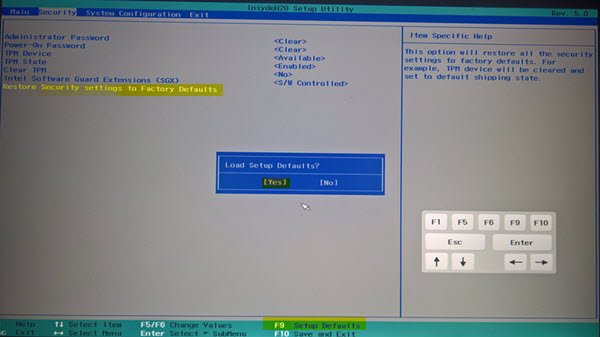
Resetting the CMOS battery resets some parts of your BIOS but never completely. If there is an issue with your BIOS configuration not being governed by the CMOS battery, we will have to reset it. So, reset your BIOS to its default values to check if the issue is resolved.
We hope that you will be able to resolve the issue easily.
Read: Windows computer won’t boot after enabling XMP in BIOS
Is XMP safe for RAM?
Yes, ideally, there should be no issues with enabling XMP on your computer. Your memory OEM has put in work and years of R&D to get this feature, and one should be free to enable it as long as their system is compatible. However, one thing you should keep in mind is that if you have an unstable or fluctuating power supply, refrain from enabling XMP or any other overclocking feature, as that can lead to some issues.
Also read: DOCP, XMP, EOCP in BIOS differences explained.